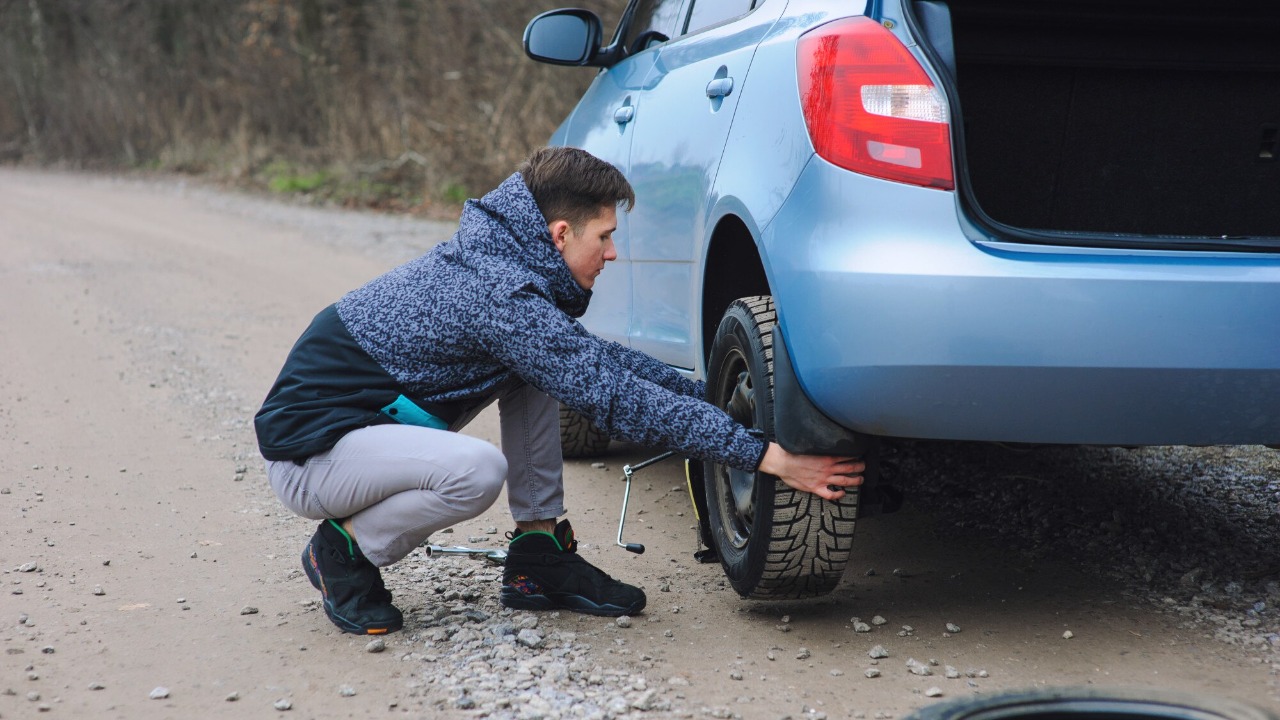
Tire blowouts on highways are a significant cause of vehicle instability, leading to over 78,000 tire-related crashes annually in the United States. Many of these incidents occur at high speeds, causing drivers to lose control within seconds. A 2022 study from the Insurance Institute for Highway Safety found that blowouts contribute to nearly 11% of fatal single-vehicle crashes on interstates. However, understanding the correct response techniques can significantly reduce the risk of injury, turning a potential catastrophe into a manageable event.
Understanding Tire Blowouts
A tire blowout is a sudden and complete failure of a tire’s integrity, often due to underinflation, overheating, or impact damage, leading to rapid air loss and vehicle swerving. Common causes include worn treads below 2/32 inch depth or excessive heat buildup from high-speed driving on hot pavement, which can cause internal tire separation. The physics involved in a blowout can also contribute to the severity of the incident. For instance, a blowout on the rear tire creates more instability than a front one due to the vehicle’s weight distribution and steering dynamics.
Recognizing Warning Signs Before a Blowout
Early indicators of tire imbalance or impending failure often include vibrations in the steering wheel, especially at highway speeds above 50 mph. Unusual road noise or thumping sounds from the wheel well may signal tread separation or a bulging sidewall. Dashboard warnings like low tire pressure alerts from TPMS (Tire Pressure Monitoring Systems) can also serve as a warning, activating when pressure drops below 25% of recommended levels.
Immediate Response When a Blowout Occurs
When a blowout occurs, drivers should firmly grip the steering wheel with both hands in the 9-and-3 o’clock position to maintain control without overcorrecting the initial pull. Slamming on the brakes can cause the vehicle to skid; instead, drivers should ease off the accelerator gradually to slow down. It’s crucial to stay calm and keep eyes on the road ahead, resisting the urge to look at the affected tire to prevent veering into traffic.
Steering and Speed Control Techniques
Regaining control of the vehicle involves countersteering gently against the vehicle’s pull—turning the wheel slightly in the opposite direction of the swerve without jerking—to regain a straight path. Decelerating by lifting off the gas pedal while monitoring the speedometer can help bring the speed below 50 mph before applying light braking on a straight section. Different tires require different responses; for example, a front blowout requires more steering input, while a rear one primarily affects traction.
Post-Blowout Vehicle Handling and Stopping
After a blowout, finding a safe shoulder pull-off is essential. Drivers should signal with hazards and use the horn if passing traffic is close, to avoid sudden lane changes. Once the speed is under 40 mph, safe braking can be applied, pumping the brakes if ABS is not equipped to prevent locking wheels on uneven highway shoulders. After stopping, assessing the damage is crucial, checking for rim contact or secondary issues like alignment shifts that could affect drivability.
Safety Measures and Recovery After Stopping
Once the vehicle is safely stopped, drivers should call for roadside assistance immediately, providing location details via GPS and describing the blowout’s position (e.g., left rear tire) for accurate response. Exiting the vehicle safely is also important, waiting for traffic to clear, using the door away from traffic, and standing behind a barrier if available. Inspecting all tires post-incident is recommended, as blowouts can indicate broader issues like underinflation across the set, and consulting a mechanic for repairs is advised.
Preventing Tire Blowouts on Highways
Regular maintenance can help prevent tire blowouts, such as monthly pressure checks to maintain 32-35 psi as per vehicle placard, and tread depth inspections every 5,000 miles. Avoiding overloads exceeding the vehicle’s GVWR (Gross Vehicle Weight Rating) and monitoring for potholes or debris on highways can also help. Seasonal preparations, like rotating tires every 6,000 miles and replacing those over six years old regardless of tread wear, can minimize highway risks.
More from MorningOverview